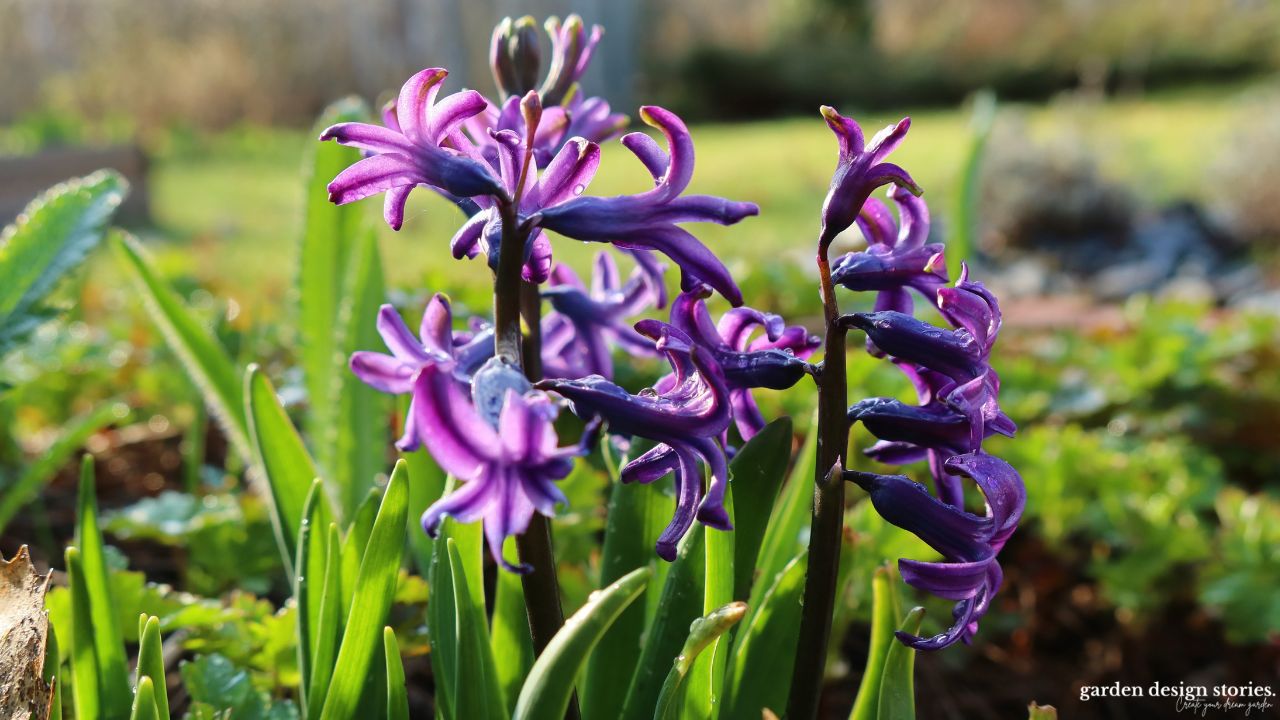3 Rules of Thumb When Planning with Spring Bulbs

Spring bulbs can prolong the flowering season profoundly. However, it takes some planning to make it successful. Here are three rules of thumb to help you create winning plant combinations.
1) Consider the Bulbs' Life Cycle
Spring bulbs have a particular cycle: you plant them in the fall, and they flower next spring. After flowering, their leaves wither as all the energy returns to the bulb. The bulb goes dormant. And the same cycle begins again next spring.
Knowing the bulb's life cycle, you immediately notice two problems regarding your garden:
- withering after flowering, aka yellowing leaves in your flowerbed
- bulbs being dormant, aka empty spaces in the summer and the fall where you had planted them.
An easy solution solves these both nuisances: plant your spring bulbs between perennials that hide the yellowing leaves and accommodate the space in the planting areas after bulbs have gone dormant.
Hyacinths (Hyacinthus) are wonderful spring bulbs with a gorgeous scent. I tend to save our Christmas hyacinths in a cool place after holiday season and plant them into our garden in spring.

(If you were wondering what a perennial is - it refers to all plants that wither for winter, whether flowering or not. Above-ground parts of the plant live only one year at a time and emerge again each spring. Compare this to evergreens and plants with wooden stems & branches that continue to grow from where they were last autumn.)
That leads us to the following design decisions.
2) Find the Perfect Pairing for Your Spring Bulbs
Check that the bulbs' flowering time perfectly matches the perennials you plant them with. You don't want to hide your spring bulbs amid other plants' lush leaves during peak flowering time.
The most suitable pairing for early spring bulbs, which are often relatively low in height, are perennial plants that emerge later in the season. For example, hostas grow their leaves above the ground very late, and it takes time for them to start opening them. A perfect pairing for hostas are grape hyacinths (Muscari) which has plenty of time to flower.


If your bulbs bloom later in the season, check the heights of the bulb in full bloom and the perennial plant.
Often plants that flower later in the season are good pairing as their leaves tend to emerge later in spring. Not always, however. As a bonus, there are no other flowers yet, just greenery that highlights your blooming spring bulbs.
3) Control or Not to Control, That's the Question
It depends so much on your preference whether you want spring bulbs to take over your flowerbeds and your lawn and spread under the hedges or not. Both styles are perfect; they are just different.
If you want your spring bulbs to naturalize and run free in your garden, choose small self-seeding spring bulbs like striped squills (Puschkinia scilloides).

If you want a more controlled feel, there are many options, like crocuses and dwarf irises (Iris reticulata 'Harmony').

And nobody forbids you to plant both of these groups. Just decide where is the perfect space for them.
Also, larger spring bulbs have different tendencies, like daffodils tend to naturalize if conditions allow. Still, tulips do not do so as much unless you plant botanical tulips that are discovered growing wild.
The Optimal Soil
The optimal soil for most spring bulbs is sandy loam, with a pH of 7.0 (neutral).
However, most of us don't possess sandy loam soil, an ideal balanced mixture of clay, sand, silt, and organic matter. The reason why sand is so important in this mix is that bulbs, in general, need good drainage.
Keeping the soil types in mind, I curated a plant selection of spring bulbs that thrive in your soil, whether you have a sandy or clay soil type. Read more >>HERE<<.
You might also be interested in the following blog posts:
Wanna Choose Best Snowdrop for Romantic Garden? Here's the One
Can I Plant Tulips and Perennials Together?
Want to Discover Your Garden Style?
Take my popular Garden Style Quiz to find out which outdoor aesthetic suits you best—and get tailored ideas for building a garden you love.


